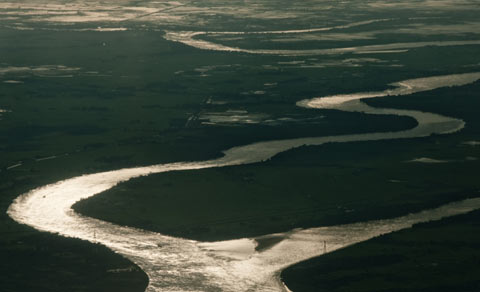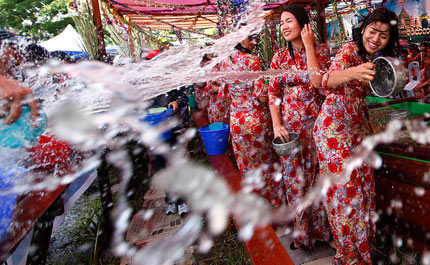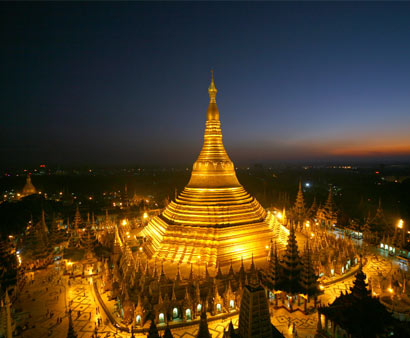Myanmar (Burma)
Country statistics

Land area: 253,954 sq miles (657,741 sq km)
Total area: 261,969 q mi (678,500 sq km)
Population (2012 est.): 54,584,650 (growth rate: 1.07%); birth rate: 19.11/1000; infant mortality rate: 47.74/1000; life expectancy: 65.24; density per sq km: 72
Capital City: Rangoon (Yangon)
Monetary unit: Kyat
Languages: Burmese, minority languages
Ethnicity/race: Burman 68%, Shan 9%, Karen 7%, Rakhine 4%, Chinese 3%, Mon 2%, Indian 2%, other 5%
Religions: Buddhist 89%, Christian 4% (Baptist 3%, Roman Catholic 1%), Islam 4%, Animist 1%, other 2%
Country introduction

Located between Bangladesh and Thailand, with India and China to the North, Myanmar covers an area of about 675,000 sq km (over 260,000 sq miles). The capital and largest city is Yangon, an important trade center is Mandalay located in Central Myanmar.
The country itself is divided into two classifications, Lower Myanmar and Upper Myanmar. Lower Myanmar is comprised of coastal areas with thick tropical forests that have valuable trees in them (teak forests, oil-bearing and timber trees) with Upper Myanmar making up the interior parts of the country.
A major topographical feature of Myanmar is the Irrawaddy River system. Since its deltaic plains are very fertile, it is considered to be the most important part of the country covering about 18,000 sq miles (47,000 sq km). Hkakabo Razi, the highest peak in South-east Asia at 19,295 ft (5,881 m), is located in Myanmar. A barrier between India and Myanmar, the Arakan Yoma range has peaks that range between 915 m (3,000 ft) and 1,525 m (5,000 ft).
Almost half of Myanmar is covered in forests that are comprised of teak, rubber, cinchona, acacia, bamboo, ironwood, mangrove, coconut, betel palm with northern highlands comprised of oak, pine and many varieties of rhododendron. There are many tropical fruits to be found as well, citrus, bananas, mangoes, and guavas in the coastal region.
The culture

Many of the life styles and activities are unique to the people of Myanmar. For example, the Shin Pyu or noviation ceremony allows a young boy to exert a non permanent monastic life by renouncing worldly pursuits. This is a non secular following, which is nearly nonexistent in other parts of the world. Although some Myanmar's beliefs, superstitions, customs and existence have steadily disappeared, many nonetheless remain and are still cherished and extremely valued by the vast majority of the country.
Over 85% of the lifestyle and culture in Myanmar is attributed to the Theravada Buddhist. In the Rakhine area, towards Bangladesh, there are lots of Muslims. Christian missionaries have had some accomplishment among hill tribes, however many stay staunch animists. Although court culture has been extinguished, well-liked street-level culture is vibrant and thriving. Drama is the mainstay of this tradition, and nearly any celebration is a great excuse for a pwe (show). Performances could recount Buddhist legends, or giant puppets. Because of this the primary toys of Myanmar are not only for the youngsters but traditionally well-known in the world, referred to as the Marionettes or Puppets of Myanmar. It is a mixture of Myanmar art and tradition, which together indicates the internal expressions of Myanmar natives.
Myanmar have many festivals throughout the year, at least one in every month. The most famous festival is the Thingyan Water festival which takes place toward the end of the hot, dry season and ushers in the Myanmar New Year. This festival is also celebrated in neighboring Theravada Buddhist countries; Songkran in Thailand and Laos, Chaul Chnam Thmey in Cambodia. The festival lasts three or five days. Standing on bamboo stages erected along the streets, people splash water on passersby. Powerful water pipes douse people driving by in jeeps and trucks. Children use water pistols to drench their friends, relatives, and anyone else in range, only the monks and the elderly are safe. The water symbolizes the washing away of the previous year's bad luck and sins. On New Year's Day itself, all the water-throwing ends. This day is celebrated by releasing captive fish and birds as acts of merit, and special feasts are held for monks.
Attractions & landmarks

Myanmar's attractions lie largely in the area of the spiritual and include temples, pagodas and historical sites. The first stop for most people in Myanmar is inevitably the Shwedagon Pagoda in the capital city of Yangon. The pagoda lies to the west of Kandawgyi Lake, on Singuttara Hill and dominates the skyline of the city. It is the most sacred Buddhist pagoda for the Burmese, with relics of the past four Buddhas enshrined within: the staff of Kakusandha, the water filter of Koṇāgamana, a piece of the robe of Kassapa and eight strands of hair from Gautama, the historical Buddha. Uppatasanti Pagoda is an exact replica of Shwedagon Pagoda in Naypyidaw, the new capital of Myanmar.
The city of Bagan situated on the eastern bank of the Ayeyawaddy River, has inspired visitors to Myanmar for nearly 1,000 years. It boasts so many attractions that it would be impossible to take them in during a single visit. It is one of the richest archaeological sites in South-east Asia and was once the capital of the first Myanmar Empire. A pleasant balloon trip can be organized here allowing visitors to get magnificent views of the towering stupas and temples.
Another attraction worth visiting is The Mandalay Palace, situated in the heart of Mandalay city. The palace is an overwhelming centerpiece, with its compound sprawling south of Mandalay hill and surrounded by a fort made up of an immense 3.2 km (1.9 miles) long, 8 m (26 ft) high walls and guarded by a 70 m (229 ft) wide moat.
Natural landmarks include the Inle lake, a vast freshwater lake located in the heart of the Shan State. It climbs up to over 900 m (2,952 ft) above sea level and is outrageously beautiful. The lake is located in the mountains so it is cooler than other areas and has more than 30 hill tribes living in the mountains. It consists of twenty species of snails and nine species of fish, which are found nowhere else in the world. Some of these, like the silver-blue scaleless Sawbwa barb, the crossbanded dwarf danio, and the Lake Inle danio, are of minor commercial importance for the aquarium trade. The lake also hosts approximately 20,000 brown and black head migratory seagulls in November, December and January.
Myanmar has many beautiful beaches, one such being the Ngapali beach, which stretches for nearly 3 km (1.8 miles) and has soft white sand fringed by coconut palms. Another beach Resort include the Ngwe Saung beach, one of the loveliest and most pleasant resorts in Myanmar. Located in the Ayeyarwady Division, some 48 km (29 miles) from the town of Pathein, Ngwe Saung, with a beach frontage on the Bay of Bengal with its clear blue waters, its white crested waves, sandy beaches and unspoiled and pollution-free natural surroundings, is indeed one of the best places to select for a holiday interlude of rest and relaxation.